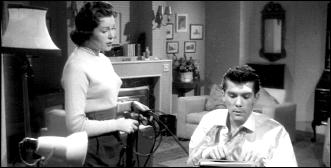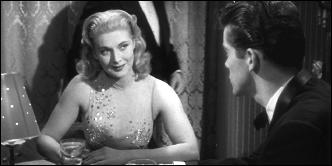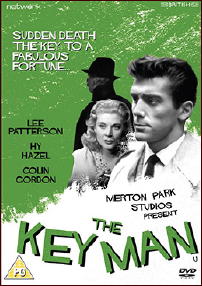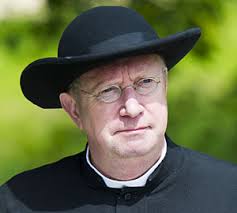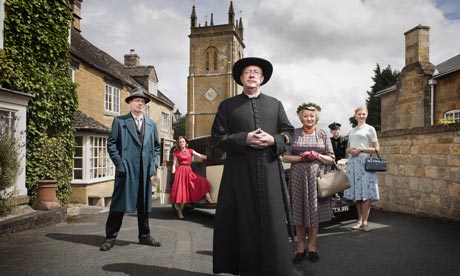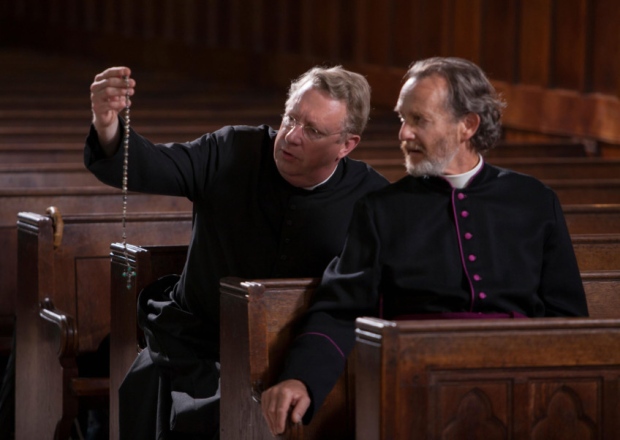INTRODUCTION: The following discussion between Michael Shonk and Randy Cox has been taking place mostly in secret, as a series of comments following a review, of all things, a sci-fi movie called The Monolith Monsters. The discourse changed, as it sometimes does, into a conversation about TV viewing in the past and carrying over into the future.
I thought the exchange interesting and even important enough to rescue from a comments section already several days old and in an out of the way place where no one would be likely to come across it. Please read and enjoy, and feel free to respond on your own, if you wish.
michael Says:
March 11th, 2015 at 1:16 pm e
Randy, I am sure Steve doesn’t mind us using this place to have a virtual email exchange:)
I remember back in the 70s when I memorized the TV schedule and made sure to watch every show at least once.
Now I rarely watch TV series on TV. I find my favorites and buy season pass at iTunes. Many of the new series offer the premiere episode for free there so I pay less and less attention to what is on TV tonight. At the moment I am considering either Netflix or Hulu to add to Acorn for streaming TV series so I can watch whatever I want to watch depending on my mood.
There is some great stuff on TV today no matter what your taste. I buy season passes for BLACKLIST, JUSTIFIED, PERSON OF INTEREST (speaking of comic books), and SHERLOCK (whenever its on). I watch regularly ARCHER, DOCTOR WHO, and VENTURE BROTHERS (whenever it is on). Acorn gives me a better and more up to date British fix than PBS and BBC America. YouTube offers me the past. I just finished watch season one of MR ROSE and now am watching ADAM ADAMANT. My TV offers me sports and the El Rey network.
TV has never been better…I just don’t watch much of it on my TV.
Randy Cox Says:
March 11th, 2015 at 4:29 pm e
Michael,
While I still watch some TV shows on TV I have found that I am able to enjoy them more fully on DVD. The lack of commercial breaks helps me to concentrate on the story.
michael Says:
March 11th, 2015 at 6:39 pm e
I have DVDs as well, heck I have three DVD players, one with a VCR. I did have to adjust to the lack of commercial breaks, especially if the show aired on the Big 4. Shows that air on commercials networks are written differently from movies or those on networks such as HBO. Every commercial break demands a mini climax and tease to hook you and get you to stay and wait for the show to return. Even without the breaks on the DVD the story still has them. The TV shows on networks with no commercials can tell a story with a pace and structure that increases the drama rather that make artificial stops to keep the audience from straying. It is one of the seldom mentioned and lesser reason shows such as GAMES OF THRONES work better on HBO and suffers if copied by any major commercial network.
Randy Cox Says:
March 12th, 2015 at 9:48 am e
I have also discovered that I can fall asleep just as easily in front of a DVD story as a TV show.
Randy Cox Says:
March 12th, 2015 at 6:30 pm e
Michael, I’ve been working my way through the 1966-71 Gothic soap opera Dark Shadows via Netflix. I guess you certainly can’t call it a decent story and the acting is only so-so. Steve was once tempted by a deal for getting the entire series in one chunk. If he succumbed we haven’t heard about it.
I watch a few episodes and then take a break.
michael Says:
March 12th, 2015 at 10:10 pm e
I remember DARK SHADOWS. i grew up in a neighborhood of about a dozen and a half kids my age. One summer we would all run inside to watch DARK SHADOWS. Then school demanded our time again and I never saw another DARK SHADOWS.
Binge viewing, watching multiple episodes of the same TV series, is nothing new. We did it with VCRs and once holiday TV marathons (such as Thanksgiving of TWILIGHT ZONE) became popular. But it seems so easier on streaming. It really gives you the feel and rhythm of the series that you miss waiting a week or more between episodes.
Randy Cox Says:
March 12th, 2015 at 10:58 pm e
I was really a fan of Dark Shadows in its day, but I could only see it during vacations and breaks from the college where I worked. One of the first episodes I saw was the one that introduced Barnabas Collins and I also remember the very last episode where they lampooned the show with the final voiceover that said that investigation proved this was no werewolf after all, but just a wild animal.
I saw a few episodes when it was syndicated and I remember seeing a few of the VHS copies of episodes and thinking that to collect those was madness because there were more than 1,200 episodes. Then came DVDs and I came upon a collection of the very first episodes before Barnabas Collins and bought it thinking it might be fun to see how it all began.
At some point I came to my senses and realized that to get all of the dvds would be expensive and (as my brother said) I might not want to watch them more than once. So I started subscribing to Netflix. Each disc has 10 episodes and that’s enough. I need frequent breaks because I lose track of the story, even with the aid of good episode guide.
Randy Cox Says:
March 13th, 2015 at 9:48 am e
Michael,
I should probably add that I turned 30 when Dark Shadows began so there was none of this “running home from school to watch†that I read about so much. I started watching mainly because one of the actresses was from my state of Minnesota and would be mentioned in the entertainment column of one of the Twin Cities newspapers. I tried one episode and was not impressed, but the one I tried sometime later that ended with a hand reaching out of a coffin to grip Willie by the neck was memorable!
You mentioned SHERLOCK in number 32. The Brits don’t beat a good thing to death and there have been only 3 series with 3 episodes each. (I think another series is planned.) It’s fun to see how they will twist elements from the original stories to fit the 21st century.
michael Says:
March 13th, 2015 at 2:42 pm e
Much has been made about the difference between the e-book and print, but in reality it has not changed the basic way we read a book – words, sentences, chapters, etc.
The digital world has changed how we watch TV. And more is coming. From days of limited choices to a possible future that will offer us an unlimited number choices much like books do, from days when you had to adjust your schedule to fit your TV watching to days when you can watch nearly any TV series from any year whenever you fell like it. From small black and white only pictures to 60inch TV screens with Ultra HD 4K (and beyond). TV entertainment itself has changed from Ad agency run TV shows to independently made shows airing on YouTube.
The future of publishing has settled in and while the e-book will become an increasing popular format, print will survive.
It is the future of the visual medium, TV and film that are in chaos. How will viewers enjoy the visual programs of the future remains unknown.
Randy Cox Says:
March 13th, 2015 at 7:45 pm e
And what will be the next new thing?
michael Says:
March 13th, 2015 at 9:33 pm e
Too many possibilities to be sure. Mobile and streaming seems to be where the money is heading.
A la carte cable will fail. One the political clout of the huge multi-corporations that own the networks (such as Comcast) will slow the process until the companies will be able to find a profit with that system or control its replacement system (most likely streaming which is cheaper). Two, why spend money for one network if you only watch one program? Logically the next step for cable providers if it wishes to survive is find a way to offer programs not networks in its packages.
The networks were created as a distributor of programming. It is a function not necessary anymore. This is why the corporations that own the networks (and CBS) are involved in cable networks and their own production studios. And why they, especially CBS, are interested in their own streaming services.
What will probably happen is the content providers will drop the middle man and sell directly to the viewer. Watch what happens to HBO Go and the CBS streaming that will start soon. It could be an early sign of the future demise of cable.
Free TV future is really hard to predict. The broadband its on is worth a fortune. Politically, it would be unwise for free TV to vanish – the poor and those who don’t want to pay for TV would be upset as well as the rich powerful people who own and run your local TV station. I see free TV following the example of free radio with nearly all live programming.
Who would have guessed what the cellphone did to the land phone?
The discussions I have read see the future home with a large 60 inch+ TV screen in the home’s living room. It will be connected to a box such as Apple TV which will connect you to all your mobile devices including video games and the single desktop computer you have in your bedroom. You will attach a sound system such as Bose for theatre like sound.
Programs will stream into the main TV or your mobile devices. Pictures will become more and more lifelike but will still try to keep the feel of film. Film will be like LP, where a small but supportive group keeps the format alive.
Movie theaters will survive, people will always need a place to go, but it needs to find some solutions to the major problems it faces. It needs to find a way to make a profit while lowering costs to the moviegoer, not only for the ticket but the popcorn and drinks as well.
There will be fewer theaters and bigger ones. The movie house needs to return to being an event (see today’s IMAX) and because of that the studios will continue to focus on the huge blockbusters and send its smaller movie stories to the local household via TV and streaming.
The technology can do all of this and more if the big money and politicians let it.
Randy Cox Says:
March 13th, 2015 at 9:48 pm e
It’s still a bit of a case of 99 channels and nothing’s on.
Regarding landline phones, I called on someone at his apartment complex and pushed the buttons beside his name at the door to tell him I was there and heard the voice tell me the number was not in service. I say down and waited and he soon came out to tell me the device didn’t work because he doesn’t have a landline phone.
I was watching the special features on a DVD and all the behind the scenes stuff. PBS makes specials out of this sort of thing to promote the new seasons and raise money. Sometimes the interviewees pat themselves on the back a little too much, but they certainly wouldn’t bad mouth their bread and butter.
michael Says:
March 13th, 2015 at 10:32 pm e
Randy, looking for something to watch in this possible TV future will offer more choices than a library has books. I have heard people tell me there is nothing to read, so you could be right.
NOTE: Michael and Randy continued their conversation briefly in its old location, unaware I had diverted it over here:
Randy Cox Says:
March 14th, 2015 at 12:22 pm e
Lots of choices require much thought and decision, maybe more than we have time to decide. Shows will be available in so many venues just like movies. You used to have to wait for a movie to show up on TV so you could see it again, then wait until it would be available on VHS then DVD. I remember someone telling me the waiting time between versions would someday be non existent and the DVD would be released along with the film premiere (maybe on the way out of the theater). Have we reached the point where a TV show could be launched and canceled in the same breath?
michael Says:
March 14th, 2015 at 4:09 pm e
Randy, movies and TV programming will remain separate as long as there are movie houses. The economic system of the two is different.
But I am sure you remember the direct to video movies of the past. Those are not as successful as in the past. Why, I am not sure, it may be caused by the increase in piracy. Why buy a cheap rip-off of the current hit film in the theaters when you can download the hit film itself.
The time between films and released on DVD and streaming has shorten perhaps due to piracy.
TV shows today are available to download on iTunes a day or two after the episode aired. It is one of the reasons the networks have pushed Nielsen to find a way to count us computer TV viewers.
For example, I buy a season pass at iTunes for TV series I would have bought the DVD. I bought the season pass for PERSON OF INTEREST shortly before the season premiered. Every week a day or so after the newest episode aired I am emailed letting me know it is ready to watch. If I were to wait for the DVD I would have to wait months after the season had ended.
TV programs have been cancelled after one episode. One of the most famous was TURN-ON (February 5, 1969 ABC). Tim Conway was the host and has joked the series was cancelled midway through the first episode.
Today, the Big Four networks are trying the direct to series route for some. MICHAEL J FOX SHOW was the most famous where no pilot was done and a full season of episodes were ordered.
Now a few of those such as Fox’s HIEROGLYPHICS that received a full season order was cancelled during filming without ever reaching the air.
